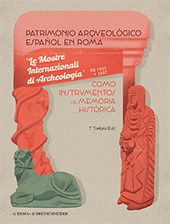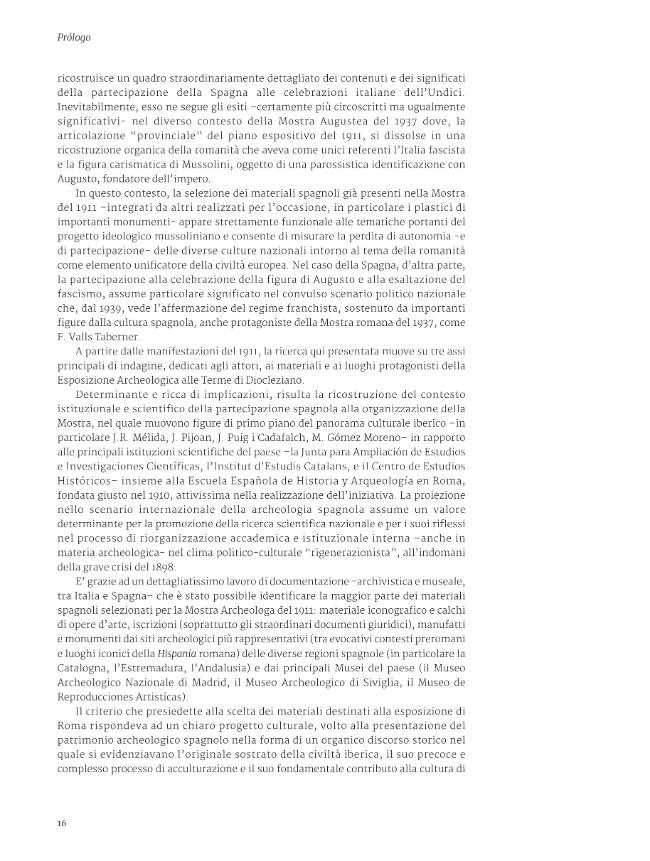Patrimonio arqueólogico español en Roma : "Le mostre internazionali di archeologia" de 1911 y 1937 como instrumentos de memoria histórica
631 pages : illustrations (some color)
Includes bibliographical references (pages 595-624).
This book collects the results of a Spanish-Italian collaboration related to the Spanish involvement in the Mostra Internazionale di Archeologia organized in 1911 at the Baths of Diocletian, and the 1937 Mostra Augustea della Romanità promoted by Benito Mussolini in Rome. As final results of this investigation carried out by a group of scholars from both countries, we identify the archaeological material that Spain selected for both exhibitions, analysing the politic and scientific contexts in which both exhibitions were put into practice through the archive documents and the press reports – both Spanish and Italian-.The particular moment that our nation lives during the first decade of the 20th century, allows for Spain to organize a historical discourse in its assigned room for the Mostra in 1911. The protohistoric environment is represented by a number of archaeological items among which the Dama de los Cerros de los Santos (Albacete) stands out.
This piece, placed in the centre of the room, integrates itself with the other Roman items, creating a wider historic discourse.This book analyses the casts and photographs sent by Spain in 1911, many of which have been mostly discovered and identified in the storage rooms of the Museo della Civiltà Romana. Such pieces were exhibited in few occasions during the Mostra of 1937, along with scale models of iconic monuments of the Hispanic Roman sphere such as the Arco de Barà (Tarragona) or the Puente de Alcántara (Cáceres).These studies on the archaeological aspects of the Exhibition in 1911 have been complemented with a further analysis of the Spanish section at the “International Arts Exhibition” which was being held in Rome at the same time.Therefore, this research seeks in the first place to establish a new methodology and experiment a possible reconstruction of the historical memory about the national identity reflected by the Spanish sent archaeological material on each of the aforementioned events.
Secondly, this volume tries to stress the importance of analysing these International Exhibitions in order to understand them as vehicles for the dissemination of the European archaeology. [Publisher's text]
Texts in Spanish and Italian; abstracts in Spanish, Italian, and English.
Collected essays.
Rome (Lazio).
-
Chapitres du même volume (disponibles individuellement)
-
Informations
ISBN: 9788891318534
COLLECTION
DISCIPLINES
VEDETTES-MATIÈRE
- Mostra internazionale di archeologia (1911 : Rome, Italy)
- Mostra augustea della romanità (1937-1938 : Rome, Italy)
- Art, Roman -- Spain -- Exhibitions -- History
- Exhibitions -- Italy -- Rome -- History
- Spain -- Antiquities, Roman -- Exhibitions -- History



